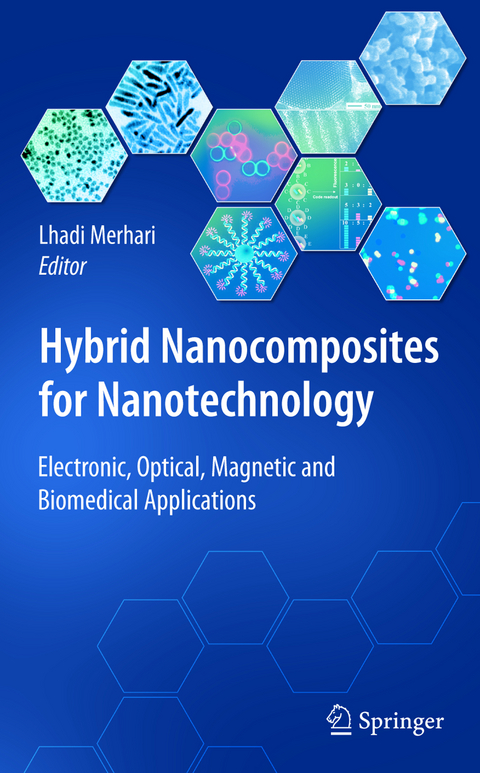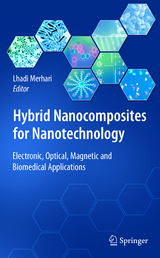Hybrid Nanocomposites for Nanotechnology
Springer-Verlag New York Inc.
978-0-387-72398-3 (ISBN)
With the advent of nanoscience and nanotechnology, the dream of scientists to engineer new functional materials combining the best specific properties of organic and inorganic materials is closer to reality. The traditional targeted application has been the reinforcement of plastics with the addition of inorganic fillers. Accelerated research over the past two decades, as evidenced by the large bulk of literature on mechanical properties of organic–inorganic composites, focused on systems such as clay/polymer nanocomposites, which are now exploited by the automotive industry worldwide. Although, in the low filler loading range, clay/polymer na- composites can replace traditional fiber-reinforced composites, there is still a long way to go before understanding the mechanisms of enhancement of major en- neering properties of polymers and to tailor their nanostructure. The driving force to edit the present comprehensive book has been to show that the applications of organic–inorganic nanocomposites extend far beyond the above-mentioned traditional mechanical applications and that hybrid nanoc- posites should be considered as an attractive, versatile, technological platform for future electronic, optical, magnetic, and biomedical applications. Indeed, taking up challenges such as homogeneous dispersion of inorganic nanoobjects into a polymer matrix or tailoring of the multiscale nano-to-macro structure of the c- posites will contribute to the establishment of a solid unified hybrid nanocomp- ite technological platform for commercially-viable products revolutionizing various industrial sectors. The generally-accepted definition of a hybrid nanocomposite is a material created by dispersing inorganic nanoparticulates into a macroscopic organic matrix.
Epoxy-silica/silsesquioxane Polymer Nanocomposites.- Scale-Up Synthesis of Polymer-Grafted Nanoparticles in Solvent-Free Dry-System and in Ionic Liquid.- Inorganic–Organic Hybrid Porous Materials.- Synthesis of Mechanically Flexible Organic–Inorganic Hybrid Nanocomposites from Polydimethylsiloxane and Metal Alkoxides.- Structural Characterization of Hybrid Organic–Inorganic Nanocomposites: X-ray.- Development of Hybrid Nanocomposites for Electronic Applications.- Next-Generation Hybrid Nanocomposite Materials Based on Conducting Organic Polymers: Energy Storage and Conversion Devices.- Hybrid Polymer-Inorganic Photovoltaic Cells.- Fullerene Nanocomposite Resists for Nanolithography.- Sol–Gel Hybrids for Electronic Applications: Hermetic Coatings for Microelectronics and Energy Storage.- Polymer–Iron Oxide Based Magnetic Nanocomposites.- Organic–Inorganic Hybrids for Light-Emitting Devices and Integrated Optics.- Highly Photosensitive Sol–Gel Hybrid Nano Materials for Direct Photo-Fabrication of Micro-Optical Elements.- Photonic Structures of Luminescent Semiconductor Nanocrystals and Spherical Microcavities.- Biomedical Applications of Organic–Inorganic Hybrid Nanoparticles.- Development of Bioactive Organic–Inorganic Hybrids Through Sol–Gel Processing.- Silica Sol–Gel Biocomposite Materials for Sensor Development.
| Zusatzinfo | 500 Illustrations, color; 300 Illustrations, black and white; XII, 847 p. 800 illus., 500 illus. in color. |
|---|---|
| Verlagsort | New York, NY |
| Sprache | englisch |
| Maße | 155 x 235 mm |
| Themenwelt | Naturwissenschaften ► Chemie ► Organische Chemie |
| Technik ► Maschinenbau | |
| ISBN-10 | 0-387-72398-6 / 0387723986 |
| ISBN-13 | 978-0-387-72398-3 / 9780387723983 |
| Zustand | Neuware |
| Haben Sie eine Frage zum Produkt? |
aus dem Bereich




